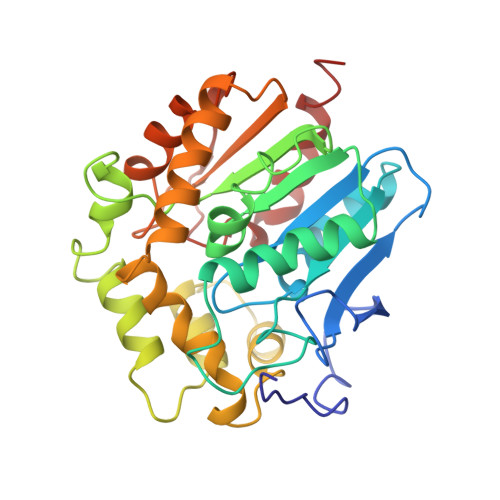Crystallographic analysis of the catalytic mechanism of haloalkane dehalogenase.
Verschueren, K.H., Seljee, F., Rozeboom, H.J., Kalk, K.H., Dijkstra, B.W.(1993) Nature 363: 693-698
- PubMed: 8515812
- DOI: https://doi.org/10.1038/363693a0
- Primary Citation of Related Structures:
2DHC, 2DHD, 2DHE - PubMed Abstract:
Crystal structures of haloalkane dehalogenase were determined in the presence of the substrate 1,2-dichloroethane. At pH 5 and 4 degrees C, substrate is bound in the active site without being converted; warming to room temperature causes the substrate's carbon-chlorine bond to be broken, producing a chloride ion with concomitant alkylation of the active-site residue Asp124. At pH 6 and room temperature the alkylated enzyme is hydrolysed by a water molecule activated by the His289-Asp260 pair in the active site. These results show that catalysis by the dehalogenase proceeds by a two-step mechanism involving an ester intermediate covalently bound at Asp124.
- BIOSON Research Institute and Laboratory of Biophysical Chemistry, University of Groningen, The Netherlands.
Organizational Affiliation:

















